For dog owners without a fence, keeping the family dog safely in their yard is a dream. It would mean no more early morning walks or trudging outside every time your dog needs to tinkle or chase squirrels.
Plus, if you can keep your dog safely in your yard, it gives her more freedom too. She can go out whenever she wants to and doesn’t have to worry about relying so much on you.
If you want to keep your dog in your yard, a fence is the easiest and safest way to do it. However, there are a few other alternatives for those who aren’t able to install a fence, for whatever the reason.
We’ll cover some of the best fence-free dog-containment options below, and explain some of the obvious and not-so-obvious reasons it’s important to keep your dog safely confined.
Keeping your Dog in Your Yard Without a Fence: Key Takeaways
- There are a number of alternatives to fences, including: “invisible” fences, tie outs, exercise pens, long leads, and boundary training.
- Think you can’t afford a fence? A DIY fence may be a more budget-friendly option. Sure, it might not last more than a few seasons, but you can usually build one for under $300.
6 Ways to Keep Your Dog in a Yard Without a Fence
As you can see, you simply must keep your dog safely within the confines of your yard. It’s the only way to reduce the dangers presented by the treats discussed above.
Luckily, there are a few ways you can do so without installing a permanent fence:
1. Invisible Fence
An invisible fence is an electric device that delivers a mild static shock to your dog whenever she passes the boundary.
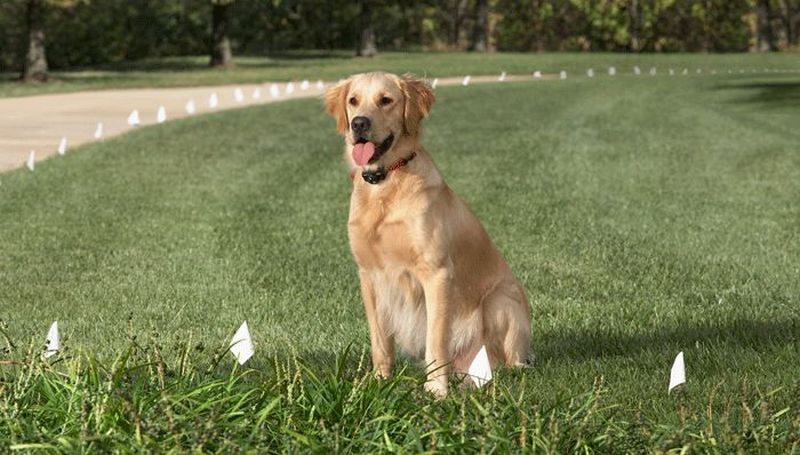
This is probably the first solution people think of when they want to keep their dog in their yard without a traditional fence.
These systems are easier to maintain than physical fences, your dog probably won’t dig under them, and they are often less expensive than physical fences as well.
Some invisible dog fences require you to bury a cable around the perimeter of your yard, but others work without wires at all. Instead, they rely on a GPS signal to tell where your dog is.
Don’t let the notion of electric shocks dissuade you from using these fences; the static shock they deliver is very minimal. It is meant to surprise your dog and notify her that she’s approaching a boundary rather than hurt her.
However, you will need to train your dog with the fence. Most bad experiences dog owners have with fences occur when the dog is not adequately trained.
It should be noted that some trainers feel invisible fences like these are inhumane, as any tool that uses punishment and fear to train your dog poses some risks. However, if it’s between an invisible fence and your dog’s wellbeing, an electric fence may be the only option.
2. Tie Outs, Tethers, or Trollies
Tie out systems involve some sort of rope or chain that keeps your dog where you want her to stay.
Some need to be staked into the ground, while others are more temporary and designed to be attached to trees and other stable structures.
Some anchor to a fixed point and offer only a modest amount of running room, while others feature sliding, mobile anchors that essentially give your dog access to the entire backyard.
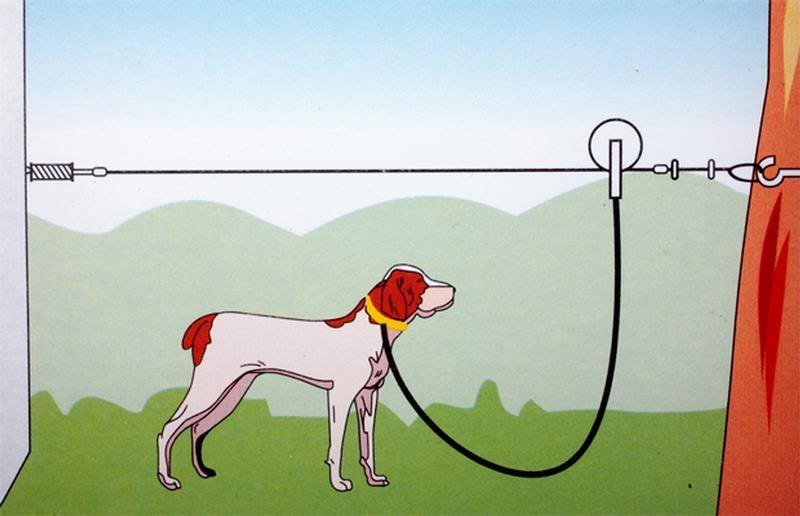
Many of these are quite easy to install and may fit your needs perfectly.
We discuss some of the pros and cons of the different systems — and help you pick the right one for your situation — in our dog tie-out and trolley article.
It is important to note that tethers and trolleys are inappropriate for unsupervised backyard time — dogs can get themselves tangled in the ropes or chains. So, you’ll only want to use these when you can keep an eye on your pet.
3. Boundary Training
Boundary training is one of the more time-consuming options, but it is also one of the cheapest fence alternatives. You simply train your dog not to go out of your yard.
It sounds a bit crazy if you’ve never seen it done before, but it is possible.
There are many different ways to work on boundary training.
Some owners have natural existing boundaries around their yard anyway (like long gravel or dog-friendly mulch strips along the borders), which makes teaching your dog the yard’s boundaries a bit easier.
Others owners may need to add some sort of visible boundary, like a rope or flags, during initial training.
You’ll start off with your dog on a lead, and walk around the yard. Reward your dog for walking around within your dog’s boundary area. When your dog walks past the boundary, quickly lead them back into the appropriate area and reward them.
Slowly, you’ll begin to walk around the edges of the boundary with them, rewarding them for staying inside the perimeter. Eventually, you’ll walk on the outside of the boundary while encouraging your dog to stay inside the boundary as you throw treats towards the inner section of your yard.
It’s certainly a long process, but it’s ideal for those who want a force-free way to keep their dogs inside the yard.
Despite this, we do not recommend relying on this method exclusively. Dogs can still get chased by other dogs, get distracted by a wild animal, or stolen.
It is great for when you’re outside with your canine, but shouldn’t be relied on for leaving your dog outside by herself.
4. Long Line
A long line is simply a long leash, rope, or tether that allows your dog more freedom in the yard while you’re there.
It’s like the tethers or tie-outs discussed above, except that it is usually attached to you, rather than a permanent anchor.
By using one, your pup gets the chance to explore lots of land, while still remaining safely inside the boundaries of your property.
This is not necessarily a long-term solution, and you’ll obviously need to be outdoors with your pet while using it. But a long line can be useful in the short-term, or whenever you’re hanging out in the yard with your pet.
5. Build Your Own Fence
If you want a fence, but don’t want to spend a ton of money on a traditional version, a DIY fence may be a good idea. Not only will a DIY fence be gentler on your bank balance, but you can also customize it to suit your specific needs.
There are a variety of DIY fence options to consider, but make sure you are realistic about your budget, your dog’s ability to escape the yard, and your own construction skills.
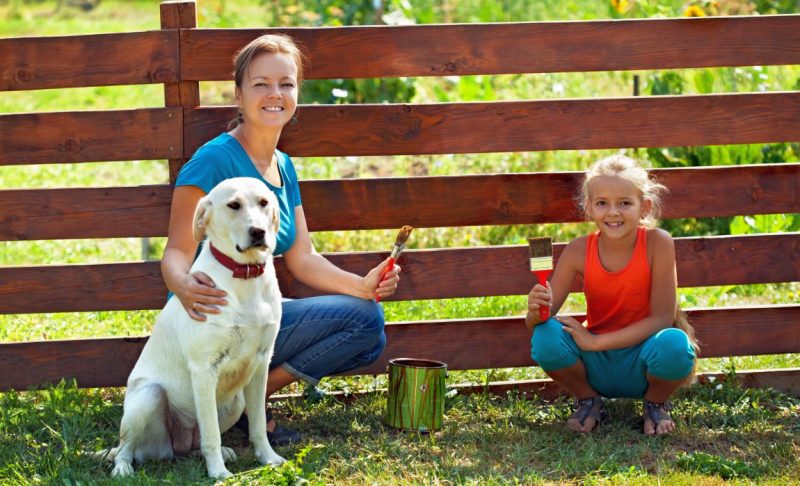
6. Exercise Pen
An exercise pen is a quick option that requires no training for your doggo.
Essentially, an exercise pen is a small fenced enclosure, which you can place in your backyard. It won’t give your dog access to your whole yard, but it won’t require much time commitment on your part either.
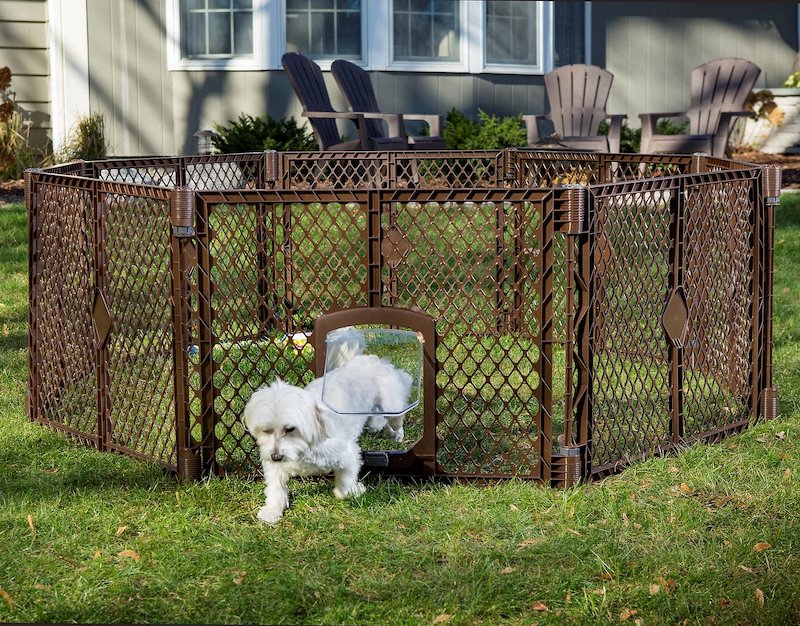
These exercise pens are particularly good for puppies, who don’t need much room to play but do need plenty of time to play. Many exercise pens can also be brought inside to confine an untrained puppy to a particular room or area.
These pens might be less helpful for bigger dogs, though.
The bigger the dog, the bigger the pen will have to be. The bigger the pen, the more difficult it is going to be to move it around.
In such cases, you may want to opt for an outdoor dog kennel or a dog run instead.
Reasons You Must Keep Your Dog in Your Yard
Unfortunately, no matter how friendly or well-behaved she is, letting your dog roam free is a bad idea.
There are a number of potential dangers she could encounter, including a few that owners often fail to consider.
Some of the most noteworthy reasons to keep your canine contained include:
Cars
Cars are one of the primary reasons your dog needs to stay in your yard.
Cars kill countless canines every year, and even those who survive will often be left with significant, potentially permanent, injuries.

Without some sort of restraint to keep your dog in the yard, there is a significant likelihood that she will get hit by a car. Even if your dog has roamed free for years without issue, it just takes one mistake for her to become seriously injured (or worse).
Running Away
The odds of your dog purposefully running away are low. No dog means to get lost, especially when your home is a place of love (and food).
However, dogs wander off and get lost all the time. Your dog might notice something in the distance that catches her attention, and by the time she stops chasing it, she could forget the way back home.
This is especially true for breeds who love to run or explore. A few of the breeds most likely to wander off include:
- Basset hounds
- Beagles
- Bloodhounds
- Coonhounds
- Dalmatians
- Dachshunds
- Great Pyrenees
- Greyhounds
- Huskies
- Malamutes
- Pointers
- Samoyeds
- Vizslas
- Weimaraners

Even if your dog never runs off, other factors can contribute to her losing her way. A startling sound could cause her take a wrong turn, or another dog could chase her into an area he is unfamiliar with.
The point is: Even dogs who don’t tend to wander off can become disoriented or lost. The only way to ensure your canine stays at home is to ensure she stays in your yard.
Need help with a dog who’s already run away? Check out our tips for catching a runaway dog.
Biting Kids and Other People
Most dog owners never think their dog will bite someone else. However, dog bites do happen – and the dog who did it obviously belonged to someone.
Plus, even if you can trust your dog to play nicely with people she encounters, you can’t always trust the people your dog will interact with when roaming. Someone might try to harm your canine, which can provoke a biting response from your dog.
Dog bites are serious business. In many areas, those who are bitten by dogs can sue the dog’s owners. Furthermore, animal control might claim your dog is a “dangerous animal,” which can lead to all sorts of problems, including your dog being euthanized.
It is always better to avoid the chance of your dog biting someone altogether by keeping her restrained in your yard.
Other Dogs
Not all dogs get along.
If your pooch is out wandering, she can (and probably will) run into another dog at some point. Sometimes, your dog may get along with the other four-footer, but this is not always going to be the case.
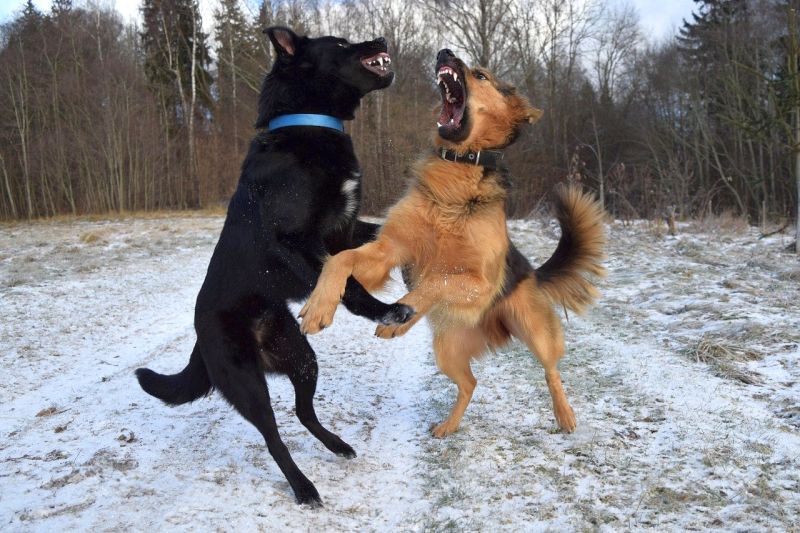
Dog fights can be severe and lead to serious injuries. The other dog might also chase your dog off, which can make it difficult for your dog to find her way home.
Your dog might also injure the other dog, which can prompt a lawsuit by the other’s owner.
On a separate but related topic, if your dog isn’t spayed, she may become pregnant while out exploring (or your male dog may impregnate that cute Chihuahua down the street).
Considering that there are thousands of animals waiting in shelters around the country, it is often best to avoid accidental puppies. And this means keeping your dog securely in your yard.
“Street Snacks”
You do not have control of what your dog interacts with when she roams.
She may encounter “tasty treats” on the street that may be dangerous. Half-eaten food, plastic pieces, and even medications can all find their way into your dog’s stomach.
As you might imagine, this can cause serious problems. Furthermore, you won’t be around when your dog eats it, so she may not even make it back to your house before she becomes sick.
Even if she does make it home, you’ll have no idea why she’s acting sick. This will not only make treating her more difficult for your veterinarian, but it’ll also make her treatment more expensive for you.
Wildlife
When your dog roams, she will potentially interact with wildlife, and that can spell trouble.
Some dogs may get into fights with local coyotes or even wolves (depending on your area). Even relatively small animals, like raccoons, can be dangerous and carry rabies, while birds of prey can even represent a danger to small pooches.

Alternatively, your dog may kill already threatened wildlife, like songbirds. In fact, outdoor cats have been shown to have a detrimental affect on wild songbird populations.
It’s the Law
In many locations, it is illegal to let your dog roam free. You may be fined or even have your dog confiscated for breaking this law.
Plus, you may have to go through quite an ordeal to get her back, if animal control scoops her up while she’s wandering. If your dog is caught doing something else illegal (like biting people), the fine can be even more substantial.
Dog-Napping
It’s important to understand that some people steal four-footers. In fact, current dog theft statistics are pretty alarming. Particularly valuable dogs are the most common targets, but just about any pooch can become the victim of a dog-napping.
This is all bad enough, but there is an even more sinister side to dog-napping as well: Some people may kidnap your dog to use her as “bait” for dog fights.
This terrible situation can be prevented by simply keeping your dog in your yard.

***
Not everyone has the means to install a physical fence in their backyard.
However, there are still a number of ways to keep your dog contained. Invisible fences, leads, and other strategies can be very effective when used appropriately.
Do you use a creative solution to keep your canine contained in your yard? Tell us all about it in the comments!
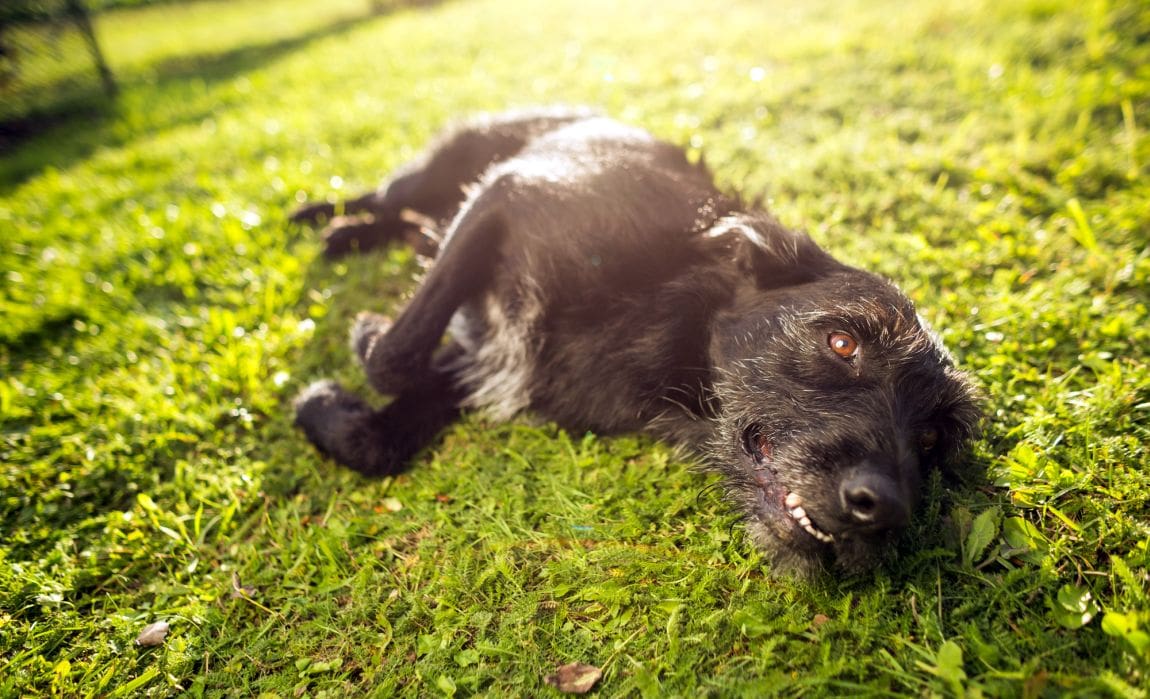







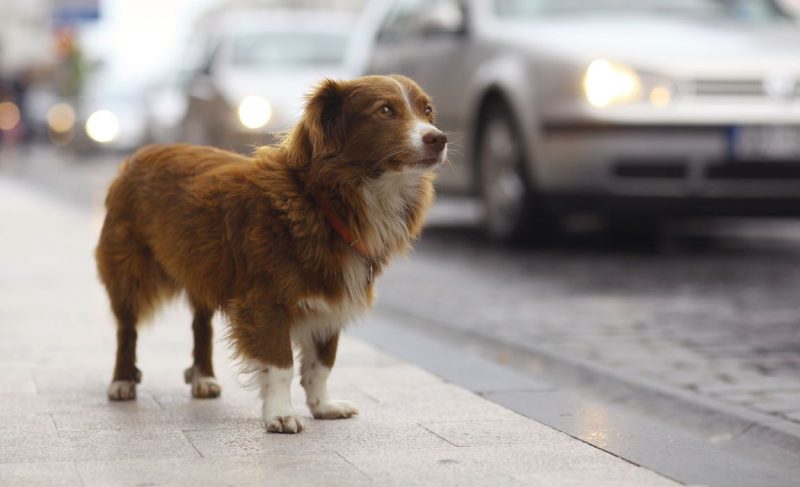



Leave a Comment